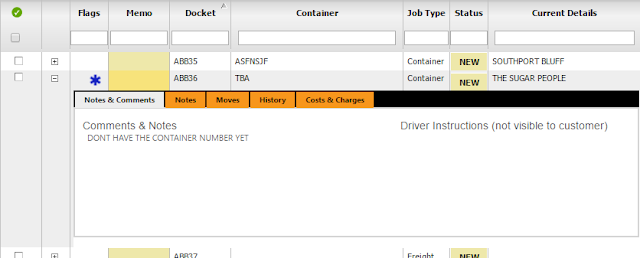We are happy to announce that today we are releasing a feature for iCOS GO which will allow you to capture these events, showing in your job history when swings occurred, and optionally tracking costs and charges associated with them.
In this model, you still only allocate work to your vehicles which are actually carting a container.
This may be skelly trucks, or swing lifts if you are doing swing-and-cart.
In the future we may release a module which allows you to allocate work to both a swing and skelly at the same time, so that they both get notification via iCOS GO to meet at a location for a swing.
We don't have a timeline for release of that module, as it requires some re-architecting of some core iCOS LIVE systems; but in the mean time we hope that this new feature allows you to at least capture costs and charges associated with swings.
We have observed that due to the always-in-motion nature of container operators fleets, many operators prefer not to pre-dispatch work to their swings anyway, letting them dynamically self-dispatch depending on needs and proximity to skellys requiring a swing.
How does it work?
Set up swing capture for your fleet
The first thing you will need to do is contact your account manager or iCOS LIVE customer service, asking for the swing capture feature to be turned on.
You will be asked to provide the following:
1: A list of which vehicles in your fleet can swing-on/swing-off
2: A list of which iCOS GO user logins you want to have the feature enabled for; typically logins for your skelly trucks.
3: The cost, charge, and financial code for swing-on and swing-off
What it looks like for your drivers
For drivers who log-in to an account with the swing feature enabled, a new button becomes available where you would normally load (uplift) or unload (offload) a container.
Once selecting swing on, a driver can then select which vehicle is swinging the container
The procedure is exactly the same for swinging a container off
The swing button records that the swing was done by the selected vehicle, and also uplifts or offloads the job.
What recorded swings look like
You can see swing events recorded against a job by opening a container job (or the quick-access column on dispatch, utilisation, or invoicing workbenches), then selecting the Costs & Charges tab.
The swings are visible, indented under the leg they were done on. They also list which vehicle did the swing (if a different vehicle to the one which carted the container)
The charge value applied can be pre-set per client, or a general value.
The cost value applied can be pre-set per contractor (if a contractor is swinging), or a general value.
Swing charges will flow through to your invoicing package the same as any other manually added extra charge.

















